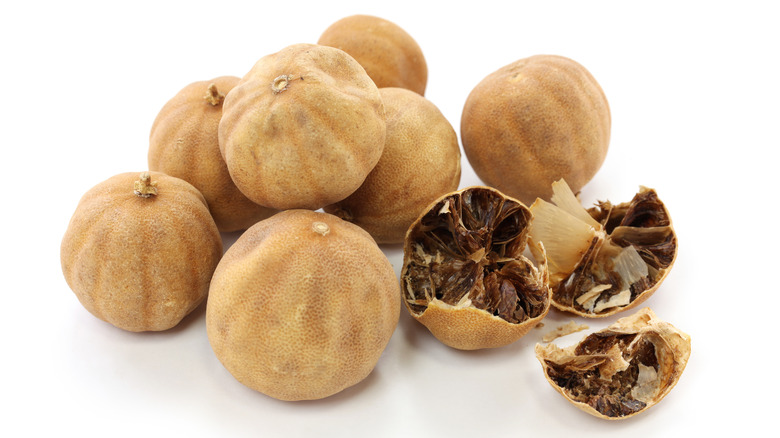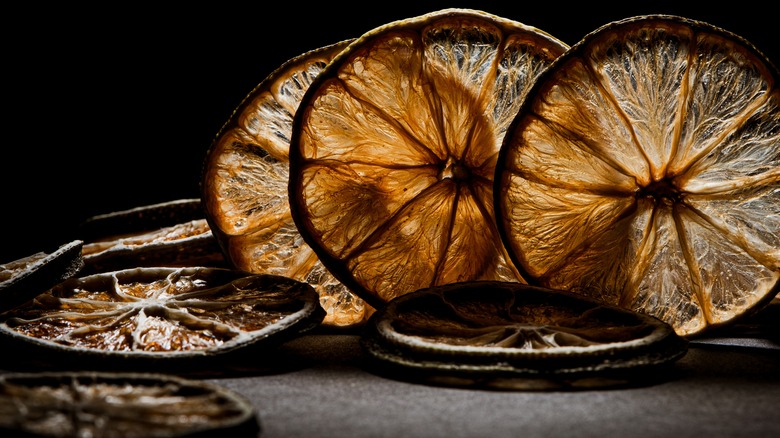What Are Black Limes And What Are They Used For?
Limes are one of those secret ingredients that aren't really a secret at all but when added to a dish, the citrus fruit makes quiet ripples in the flavors of the meal. A splash of lime juice can make flat sauces surprisingly complex, turn firm berries into juicy macerated fruits, and its bright acidity can cut through the heat and grease of heavy dishes. Lemon zest, on the other hand, can make fried foods lighter, creamy dips zingier, and baked goods more lemony and flavorful.
Go to any Middle Eastern restaurant or cookbook author and restaurateur Yotam Ottolenghi's kitchen, however, and you'll find that the flavors of lime are more bold, more obvious, and surprisingly, more intense. That's because the citrus fruits that they use are no ordinary yellow-green limes. These limes are dried, have a black flesh, and shatter into fragments when pressed into, releasing a strong citrusy aroma in the air. They are called black limes.
Known as limu Omani because they originated in Oman, black limes are fresh limes that are blanched in brine (salted water) and dried (via Fine Dining Lovers). Once all the water content is gone, the limes turn hard and brittle and the color of the peel and the flesh turns into a shade of brown or black. Black limes are commonly used in the cuisines of the Gulf States where but a small pinch of the dried lime adds a potent flavor that fresh limes simply cannot replicate.
Black limes are dried fresh limes with more complexity
Traditionally, fresh limes were left on trees to dry till they turned into black limes before being harvested but the limes can be dried under the sun or in dehydrators and ovens as well. Once the fresh limes have dried and lost all their water, what's left is a type of lime that has a more concentrated sour and acidic flavor than that of fresh lime with the addition of flavor notes that are earthy and fermented.
These black limes are then used in several different ways. Their brittle texture lends the citrus well to being pulverized into a powder which Ottolenghi adds to salads and marinades or uses as a substitute for sumac which has a similar flavor profile (via Bon Appétit). Alternatively, black limes can also be used whole. In his book "Ottolenghi Flavour," the chef says that are two ways to add the flavor of black limes to broths and stews: pierce whole limes and add them to the liquid for a more mild flavor or, soak whole black limes and then chop them into fine pieces for a punchier acidic flavor that's more earthy.
Powdered or whole, black limes are used in all sorts of Middle Eastern meat and rice preparations and brewed in hot water to make a tart loomi tea. But you don't always have to whip up traditional Middle Eastern delicacies to use black limes. Ottolenghi finds that a black lime can even transform things like everyday soups into entirely new meals with its complex flavor.

